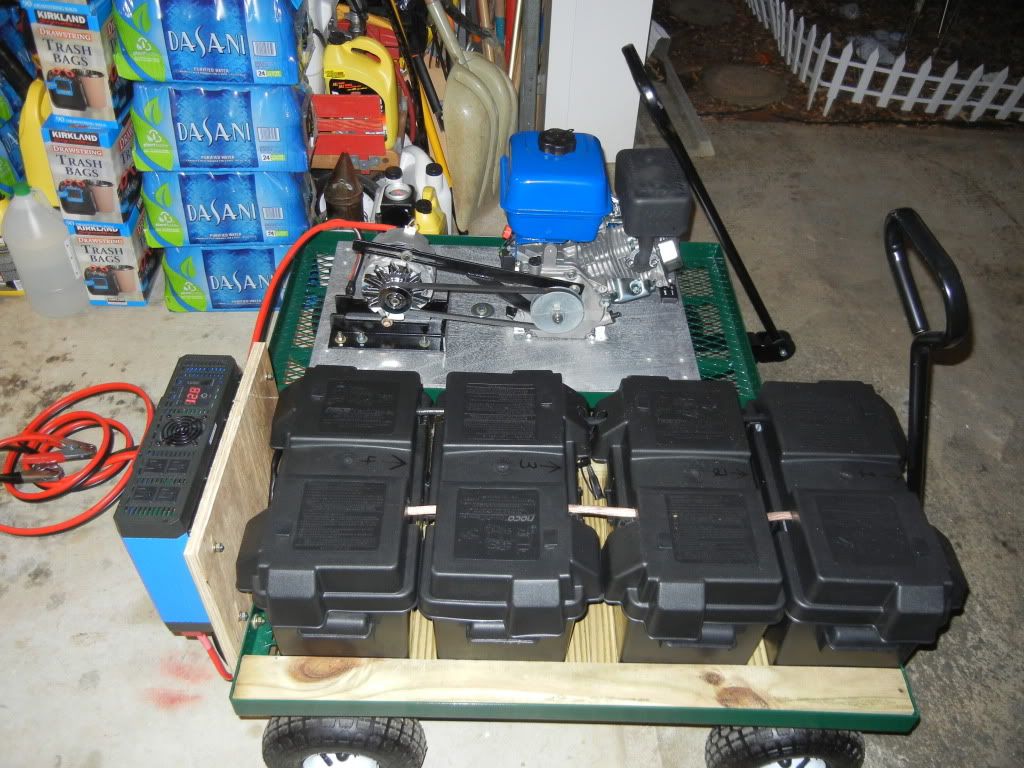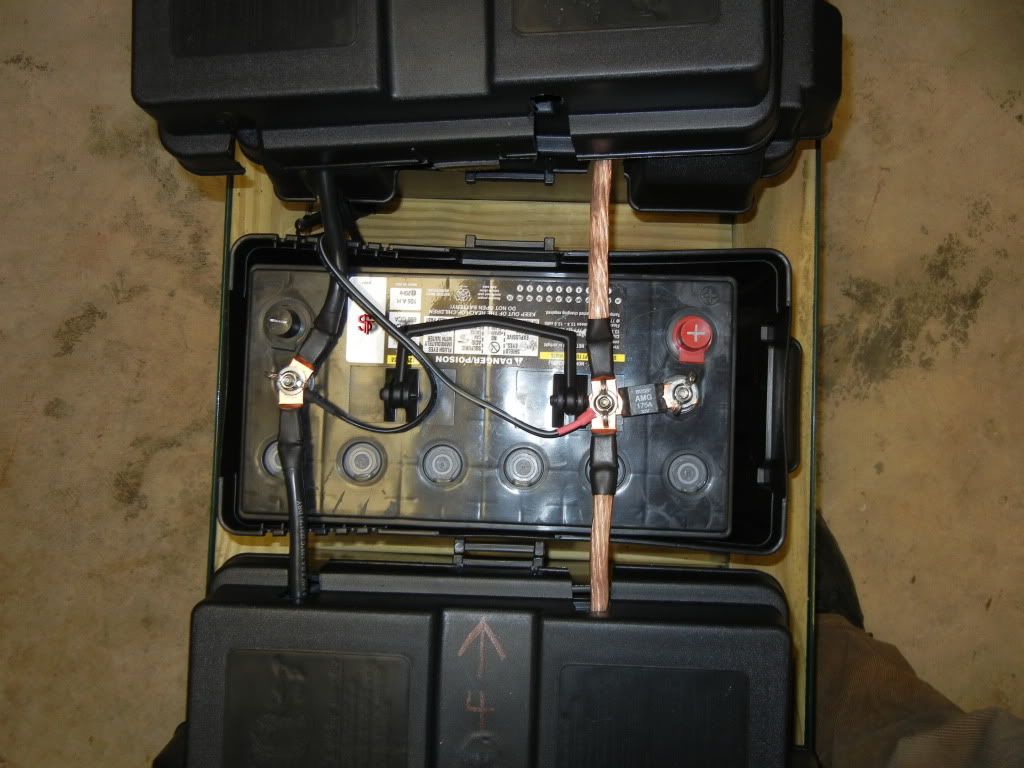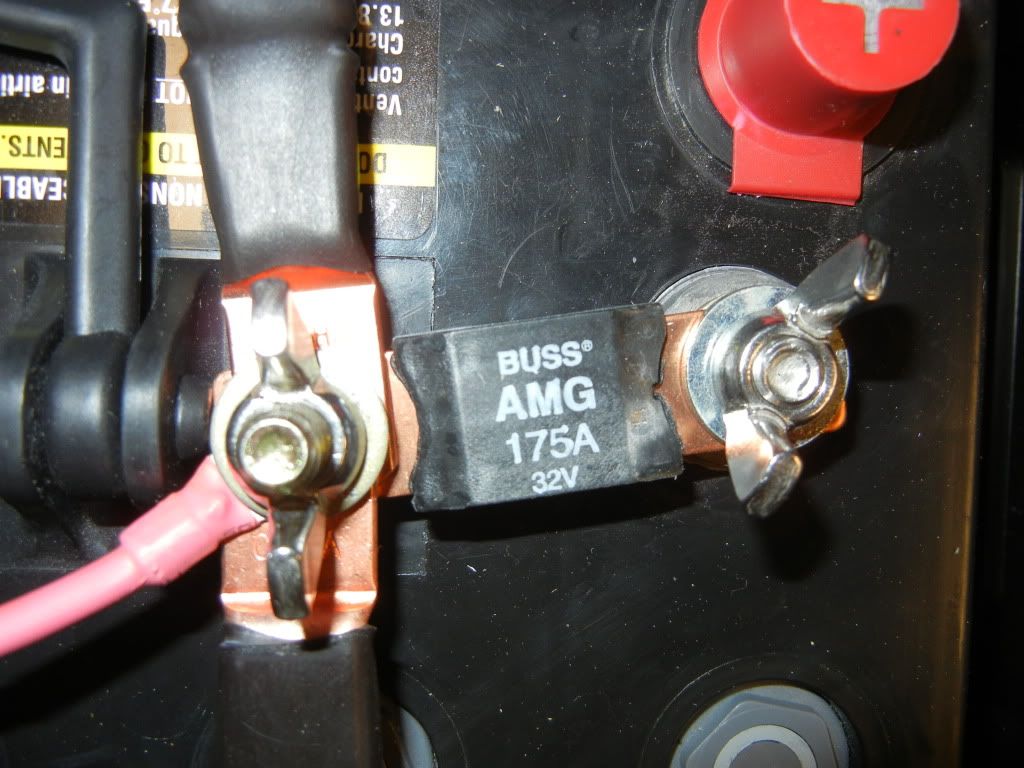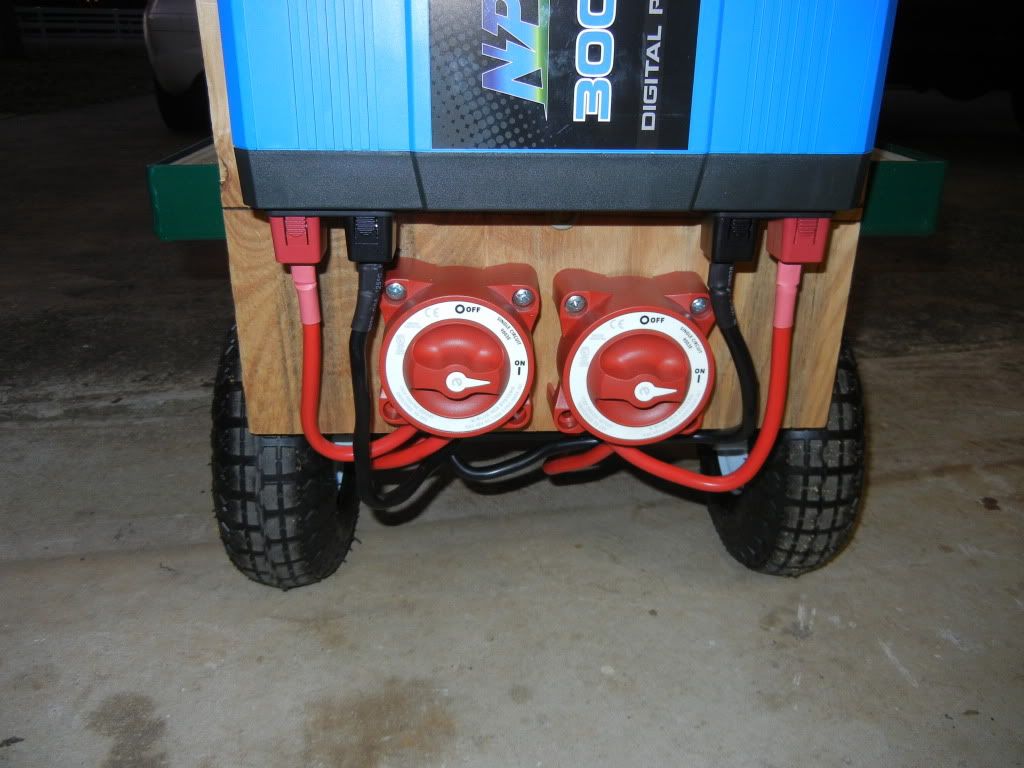Well been board today so I decided to put this together for part of my backup power supply. I went way over budget on this one. I tried to make it as safe as possible for inside my house use.
I bought a lot more expensive batteries than I wanted, however I think I will be happier in the long run. I now have to take the wood back off and round the corners and paint it. I also have to tidy up a few of the wires.This is a work in progress project, so I will be making improvements over the next few weeks. I can't wait to see how long the batteries will last running my fridge,TV and lights around the house.
When charging I plan on taking the tops off the boxes so to let the batteries be cooler. I also placed a small amount of space between the batteries so as to have cooling room.
The inverter is a 3000 watt continuous and 5000 surge (Wish I had spent the extra on a pure sine inverter).
The batteries are four 12 volt 105 AH AGM batteries, giving me a total of 420AH.
I used 2 Guage wire.
I made the unit mobile so I can roll it where I want with ease.
I placed 2 very large power switches on the unit to cut power to the inverter when not in use, The inverter still draws ampage even when off, the switches prevent this.
I placed a 175 amp fuse on each battery in case of a short.
Check out post # 22 for newest pictures.
My mobile battery bank.
![Image]()
My battery bank and battery charger.
![Image]()
The interter i'm using, wish I had a pure sine now.
![Image]()
The battery top off one of the AGM batteries, notice the large 2 gage wire connecting the batteries.
![Image]()
My mobile battery bank. I use the wood to keep the batteries in position and stop them from shifting, I got to paint it.
![Image]()
A close up of the 175 amp fuses i'm using.
![Image]()
Large high amp marine on off switches to prevent battery drain when not in use.
![Image]()
I bought a lot more expensive batteries than I wanted, however I think I will be happier in the long run. I now have to take the wood back off and round the corners and paint it. I also have to tidy up a few of the wires.This is a work in progress project, so I will be making improvements over the next few weeks. I can't wait to see how long the batteries will last running my fridge,TV and lights around the house.
When charging I plan on taking the tops off the boxes so to let the batteries be cooler. I also placed a small amount of space between the batteries so as to have cooling room.
The inverter is a 3000 watt continuous and 5000 surge (Wish I had spent the extra on a pure sine inverter).
The batteries are four 12 volt 105 AH AGM batteries, giving me a total of 420AH.
I used 2 Guage wire.
I made the unit mobile so I can roll it where I want with ease.
I placed 2 very large power switches on the unit to cut power to the inverter when not in use, The inverter still draws ampage even when off, the switches prevent this.
I placed a 175 amp fuse on each battery in case of a short.
Check out post # 22 for newest pictures.
My mobile battery bank.

My battery bank and battery charger.

The interter i'm using, wish I had a pure sine now.

The battery top off one of the AGM batteries, notice the large 2 gage wire connecting the batteries.

My mobile battery bank. I use the wood to keep the batteries in position and stop them from shifting, I got to paint it.

A close up of the 175 amp fuses i'm using.

Large high amp marine on off switches to prevent battery drain when not in use.







